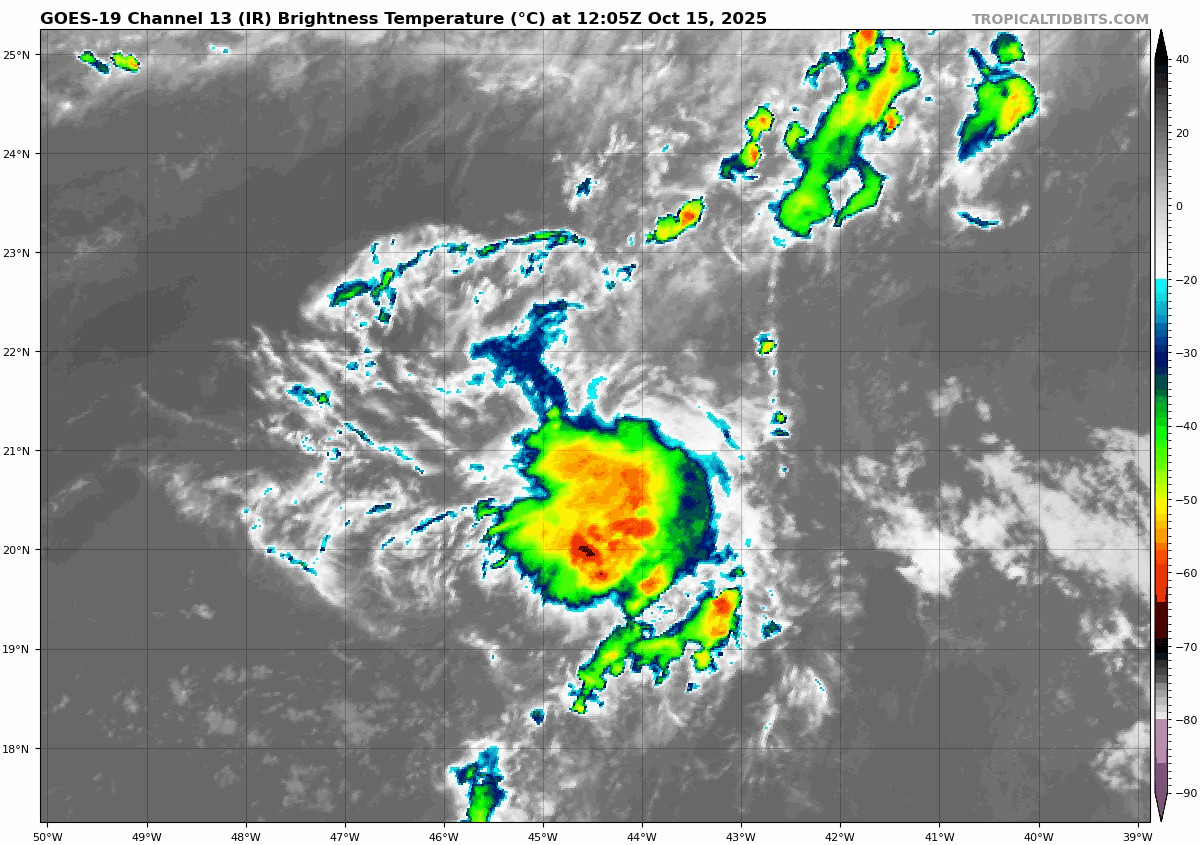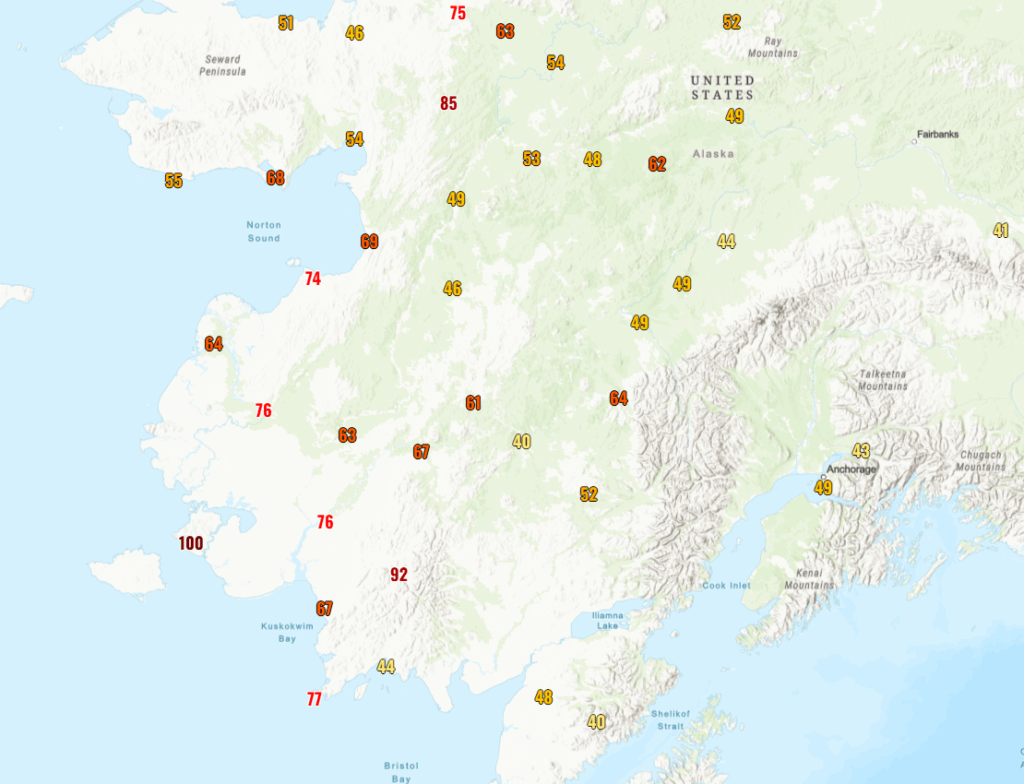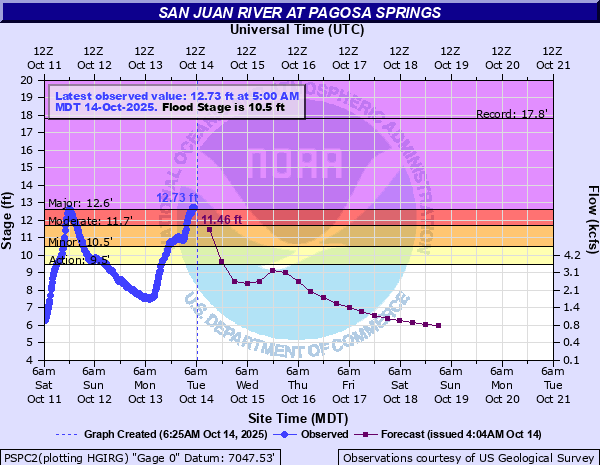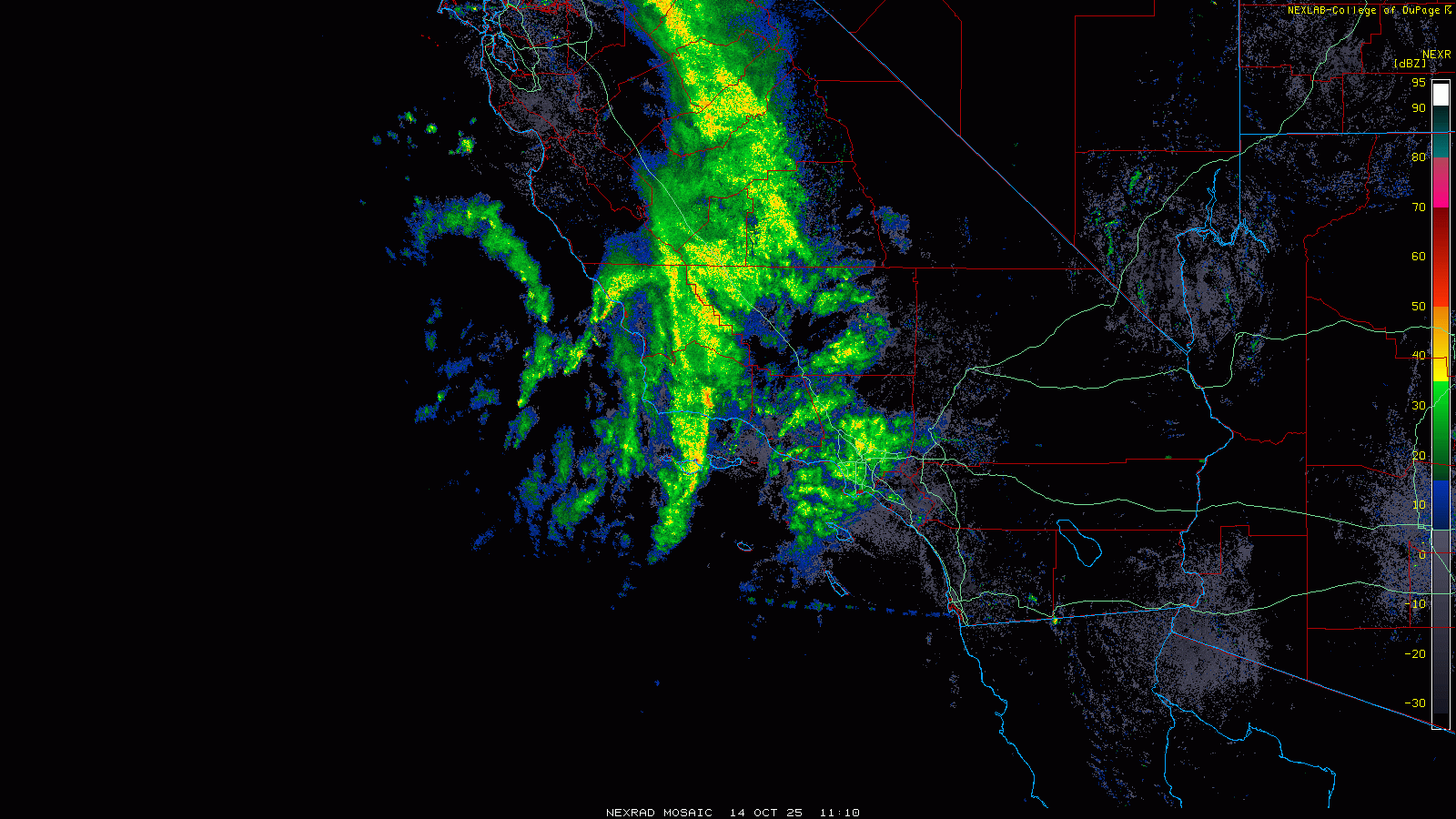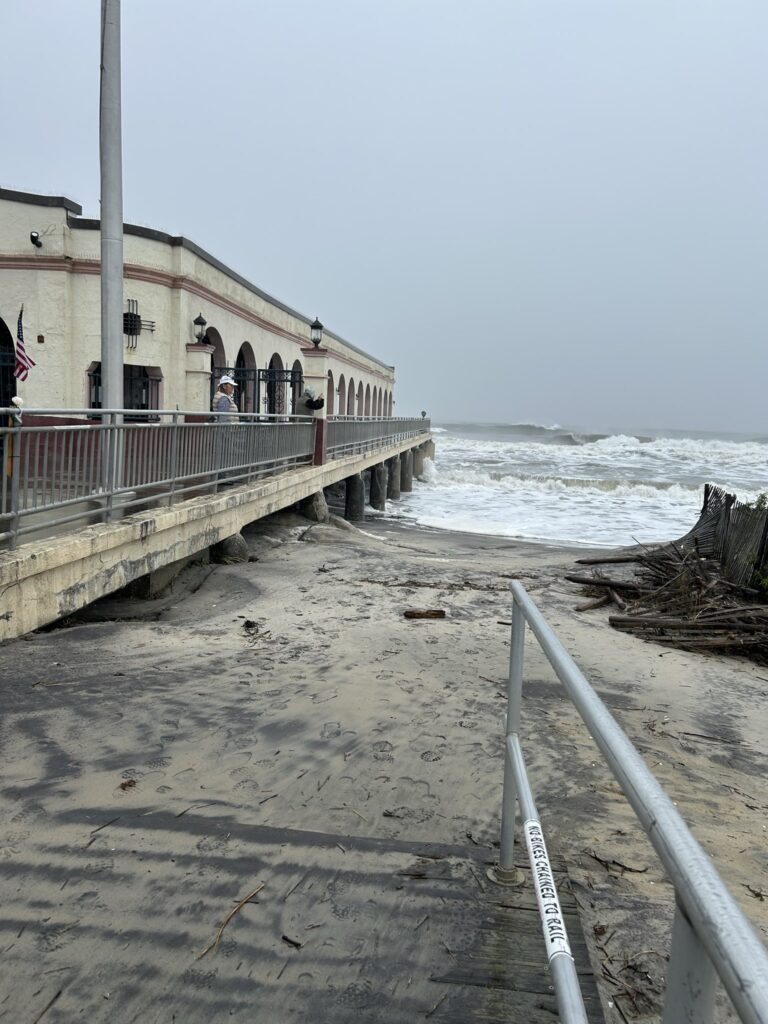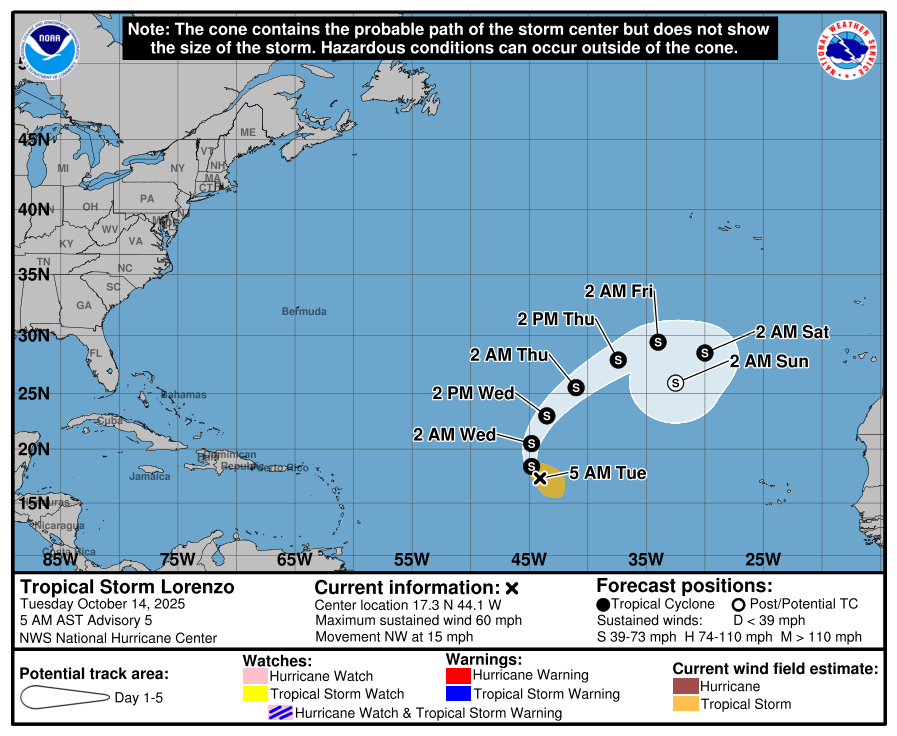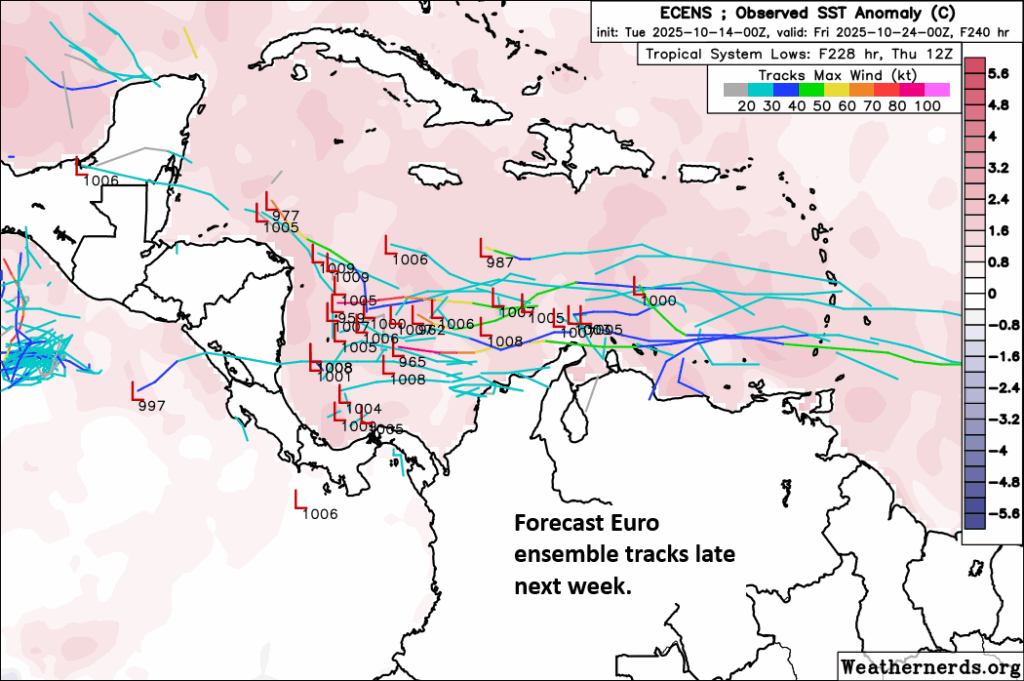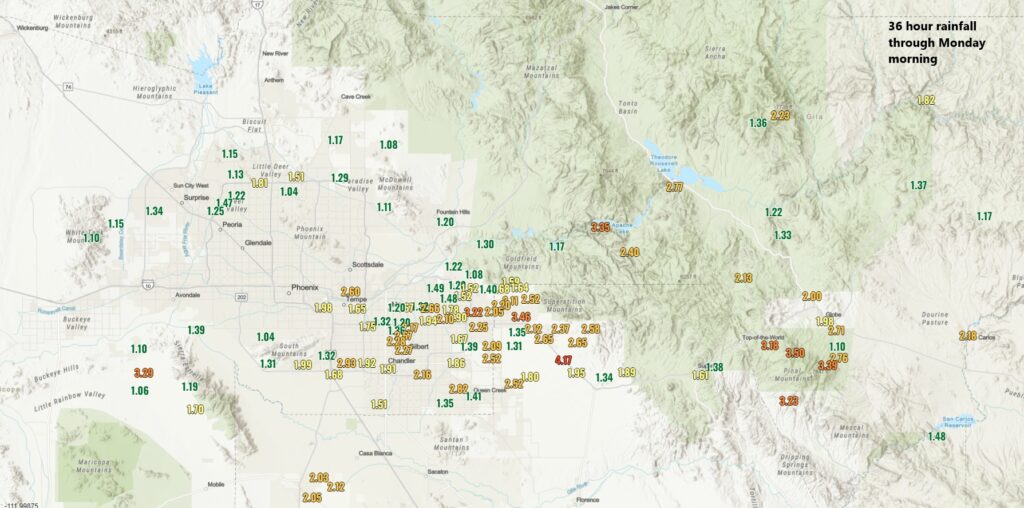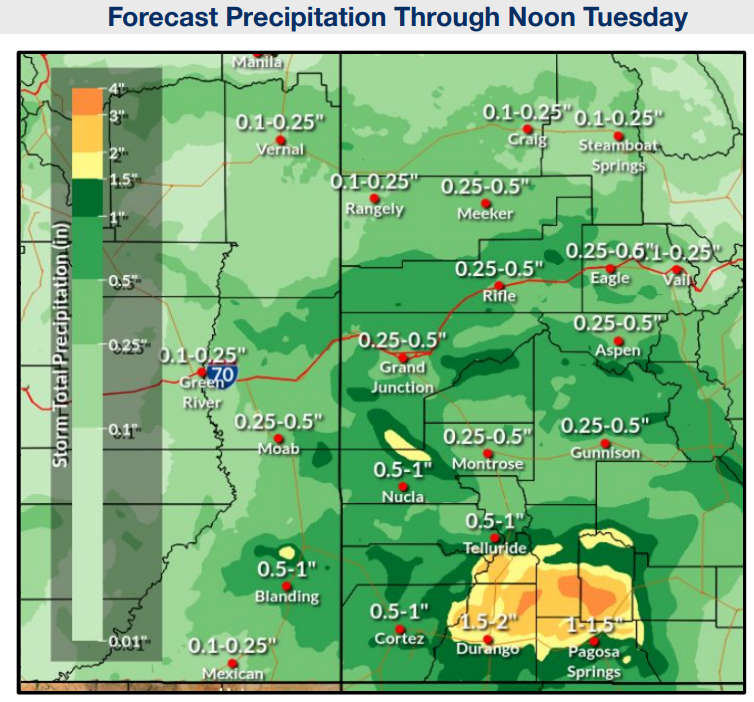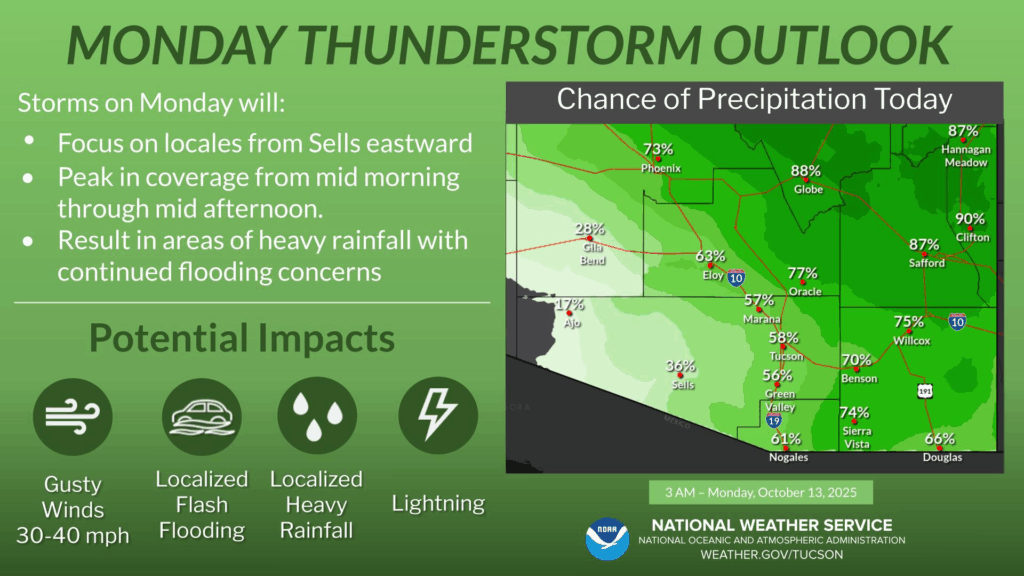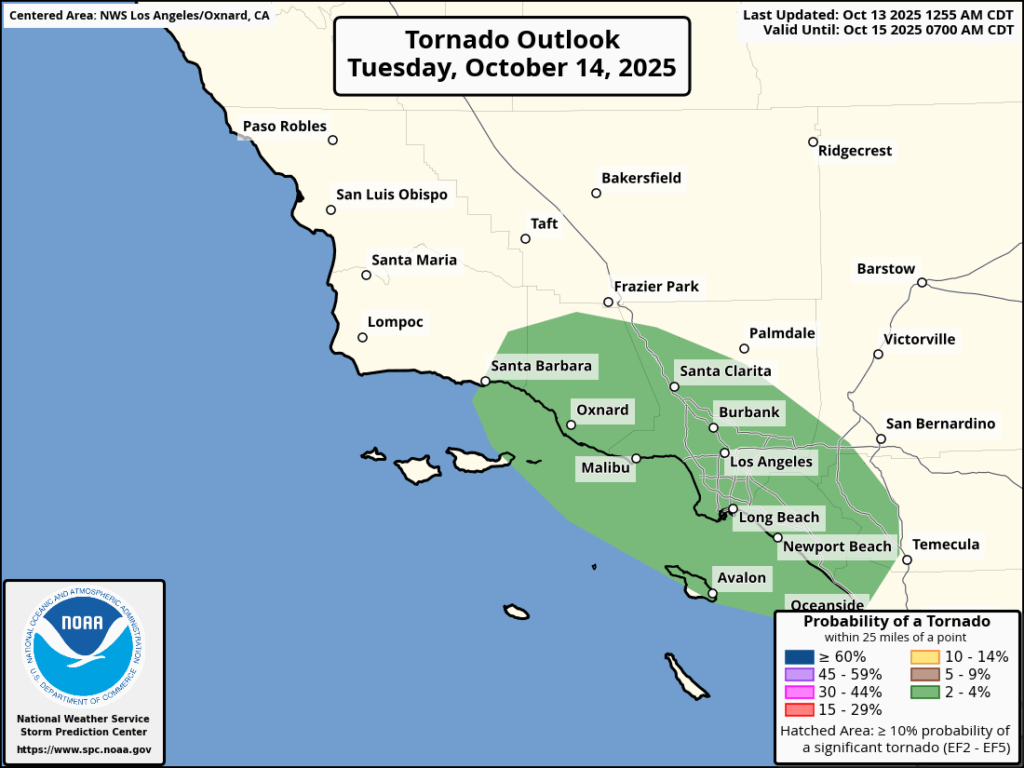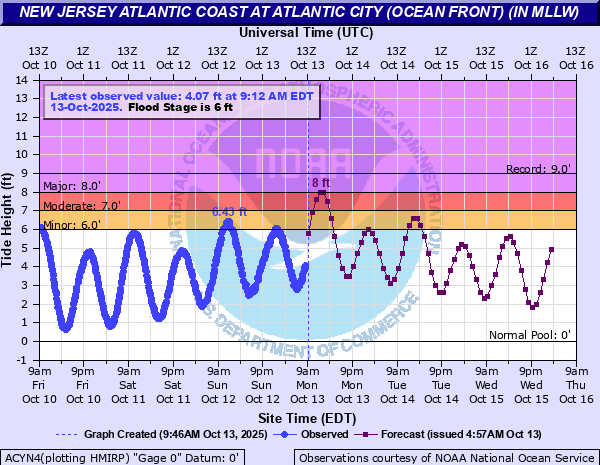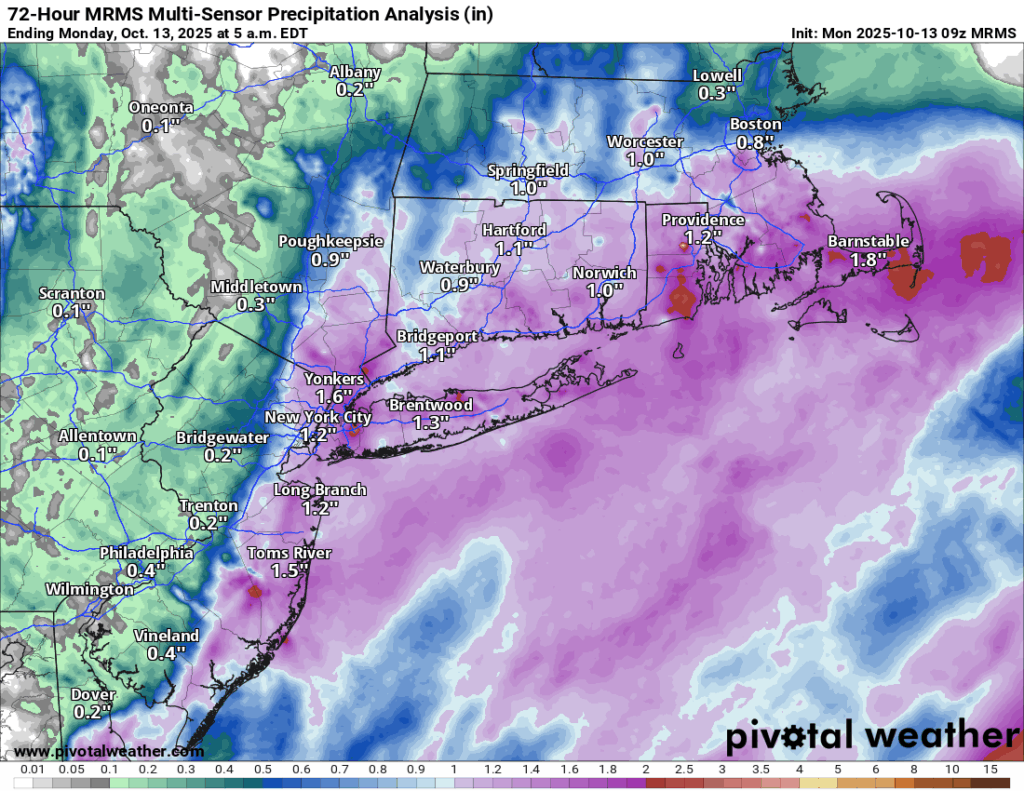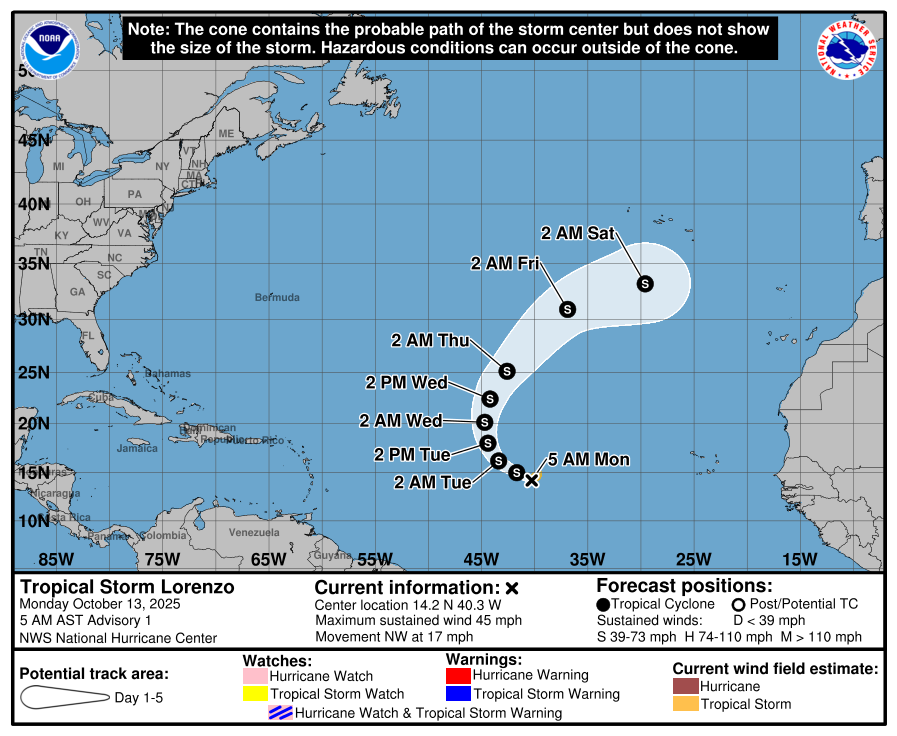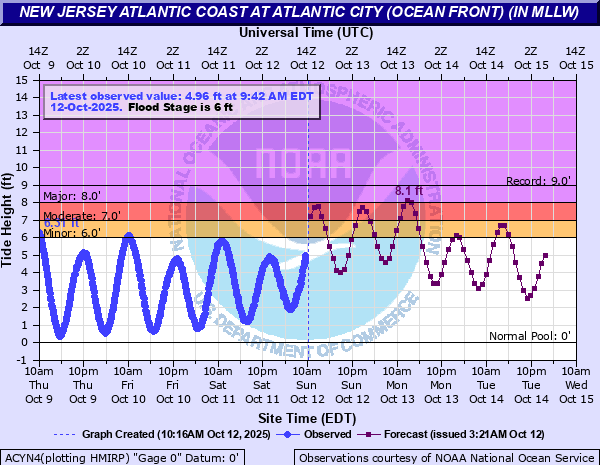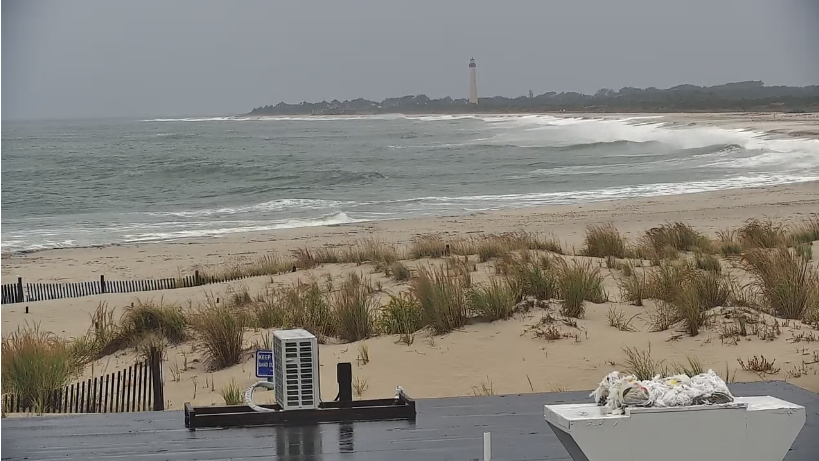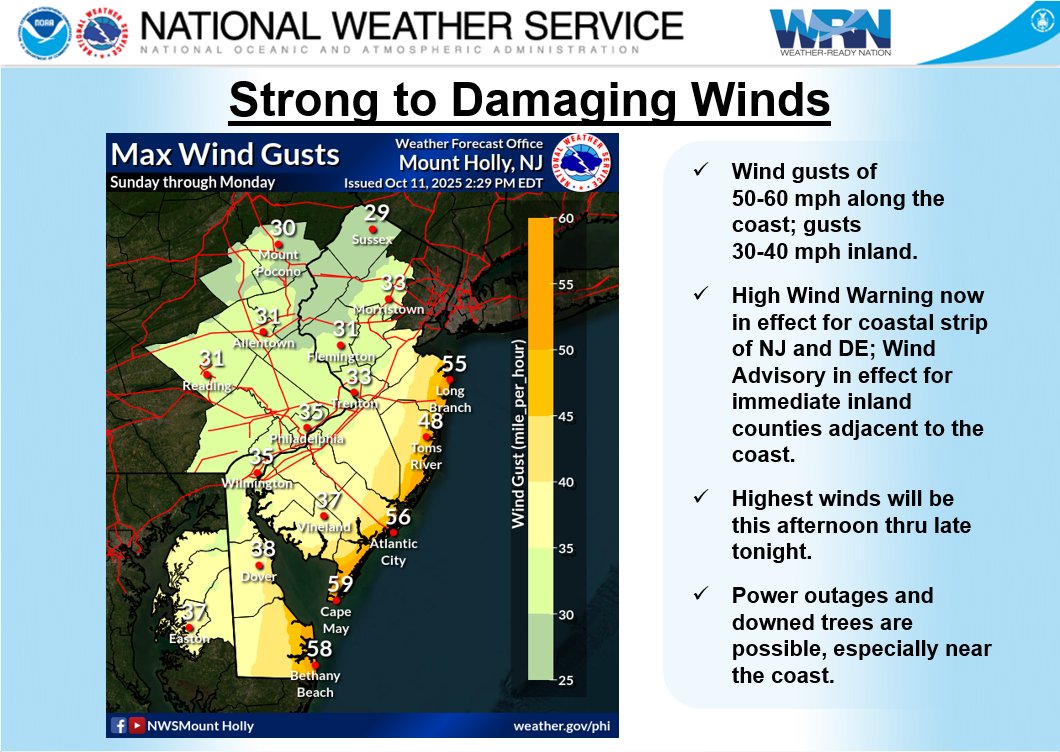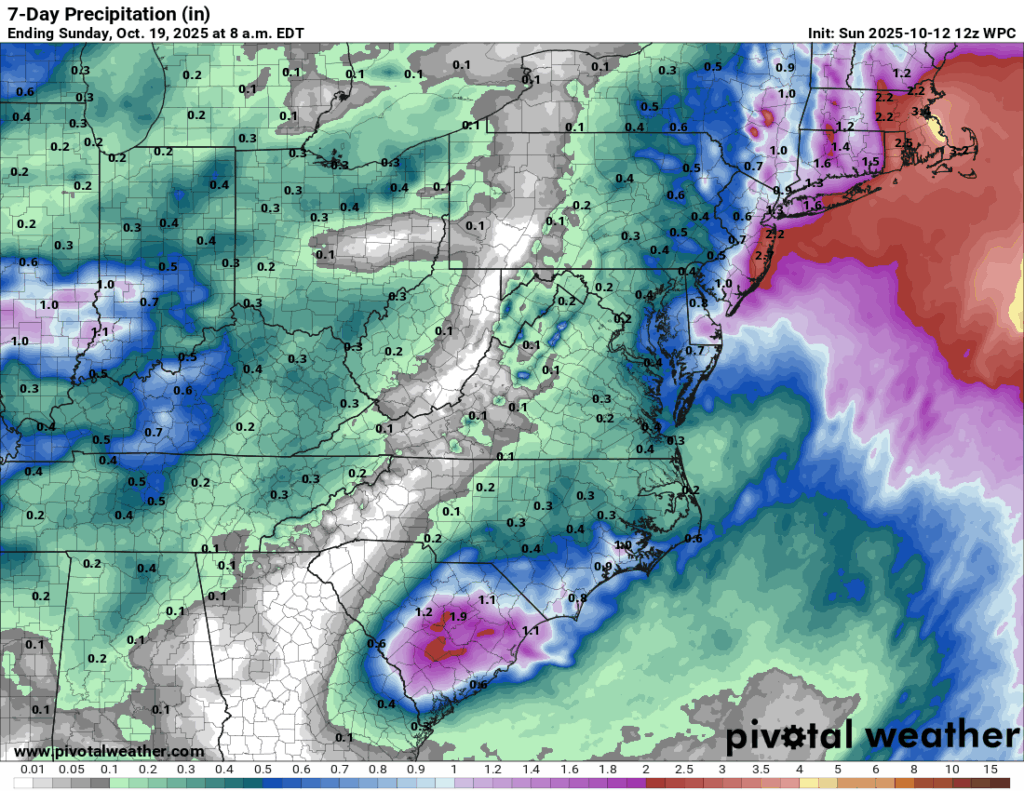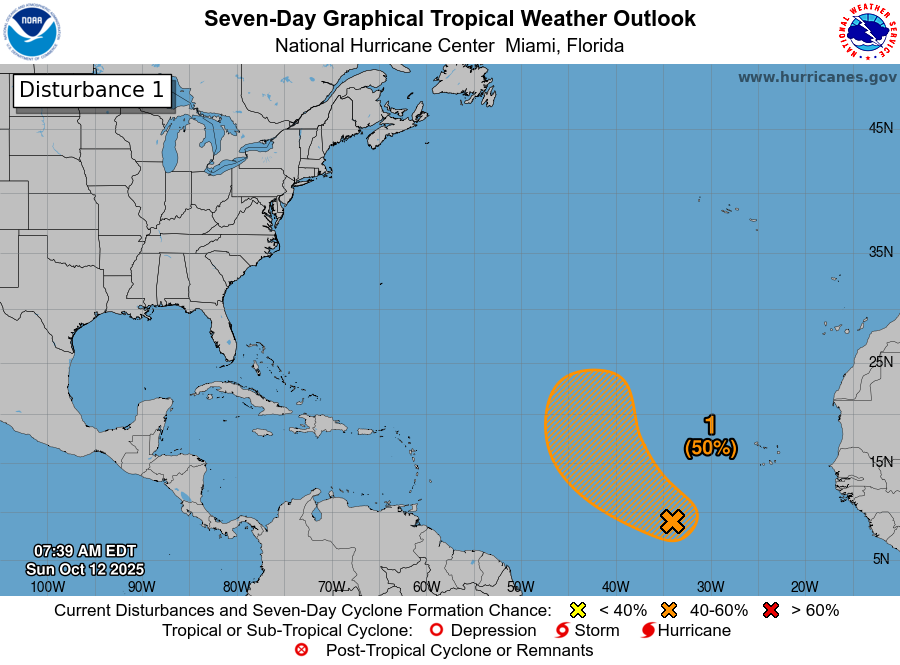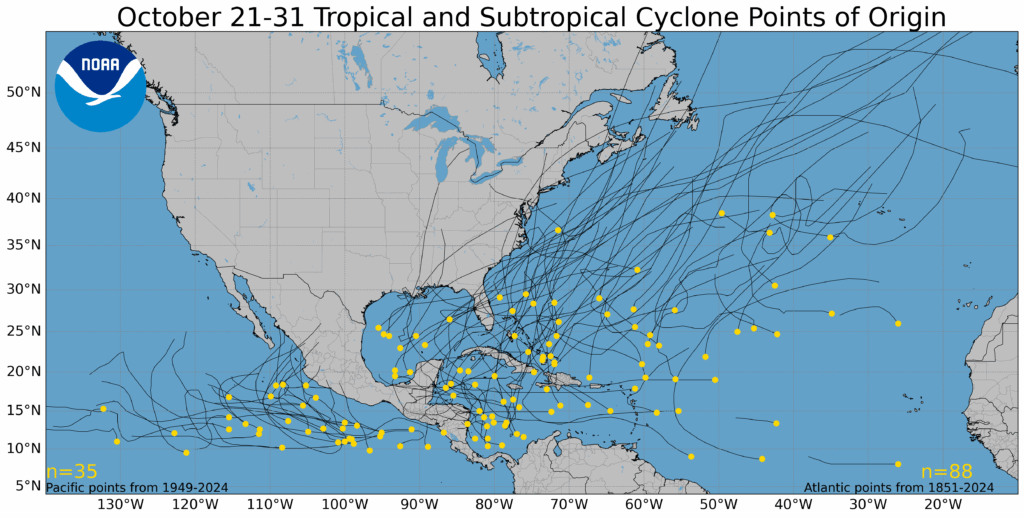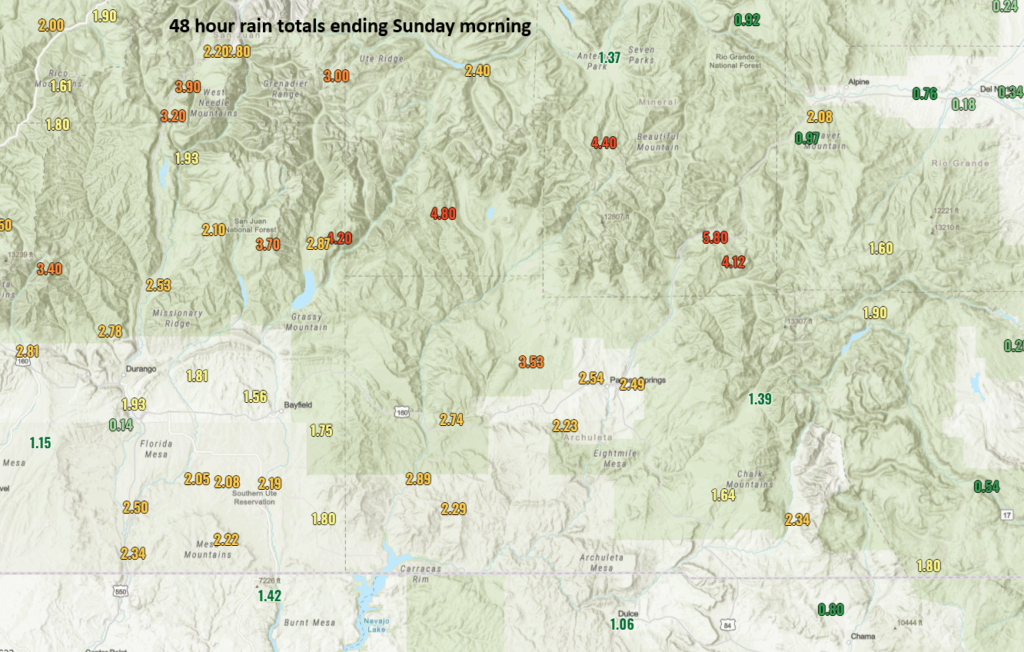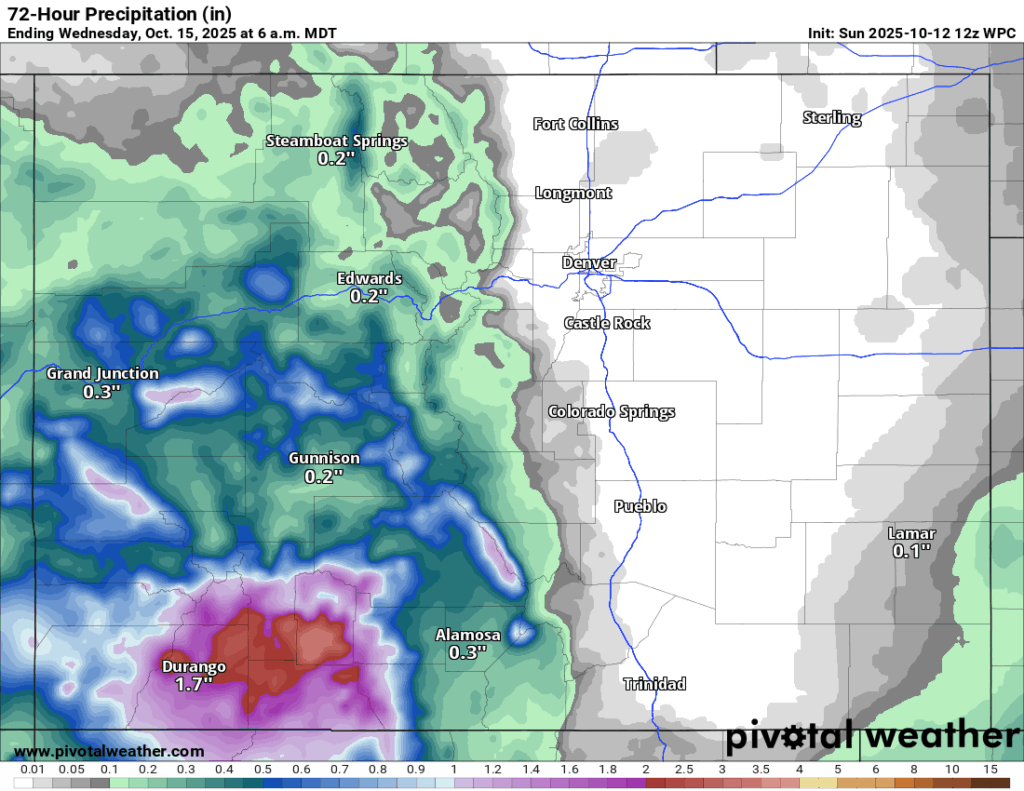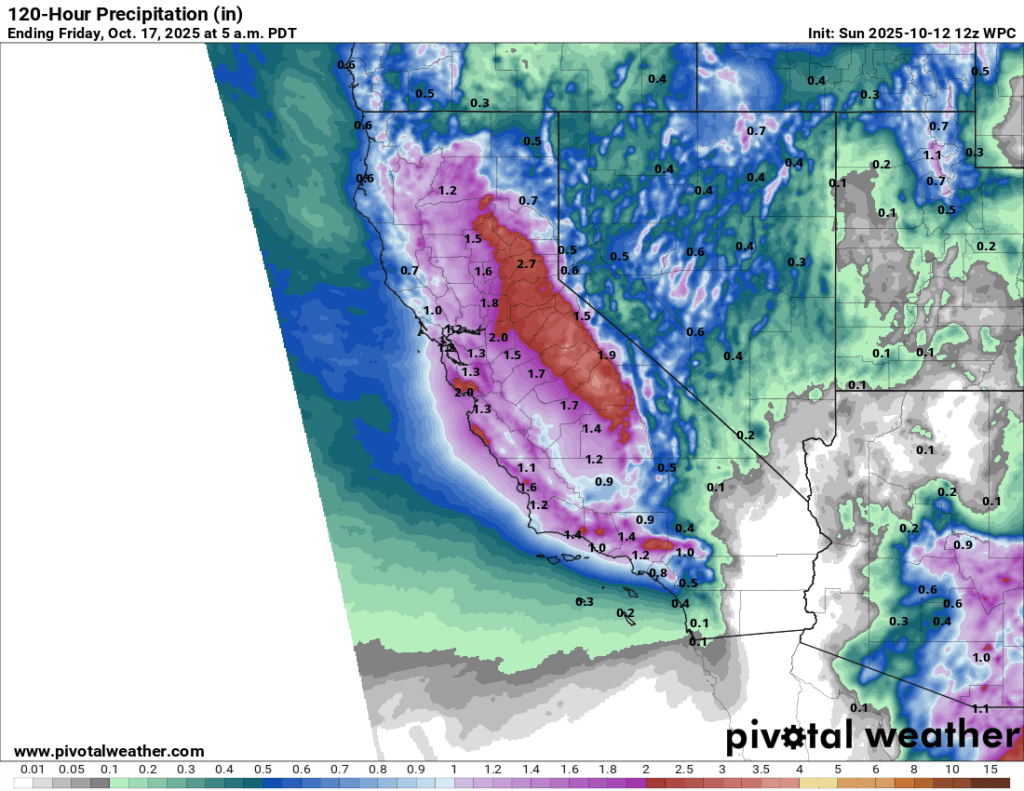In brief: Tropical Storm Lorenzo will dissipate soon. We continue to see hints that the Caribbean would be the place to watch later next week, but we lack any strong model support for this even at this time. Something to watch but not worry over. We also wrap up some weather news from Alaska, Colorado, California, and Mexico.
Lorenzo’s demise and Caribbean development risks next week
Tropical Storm Lorenzo is not long for this world. It is expected to dissipate later today.
It may have already. Who’s to say? Either way, it’s a non-issue for anyone other than some shipping interests.
We’ve also noted that the Caribbean may see a tropical wave next week, and there has definitely been an uptick in social media postings about this area. Right now, I’m not especially impressed with model support for this area. I think one issue we are seeing is that it enters the Caribbean a little too far south initially. This proximity to South America may hinder any chance it develops. Here’s Google’s AI model ensemble members and the Euro ensemble members on Tuesday.
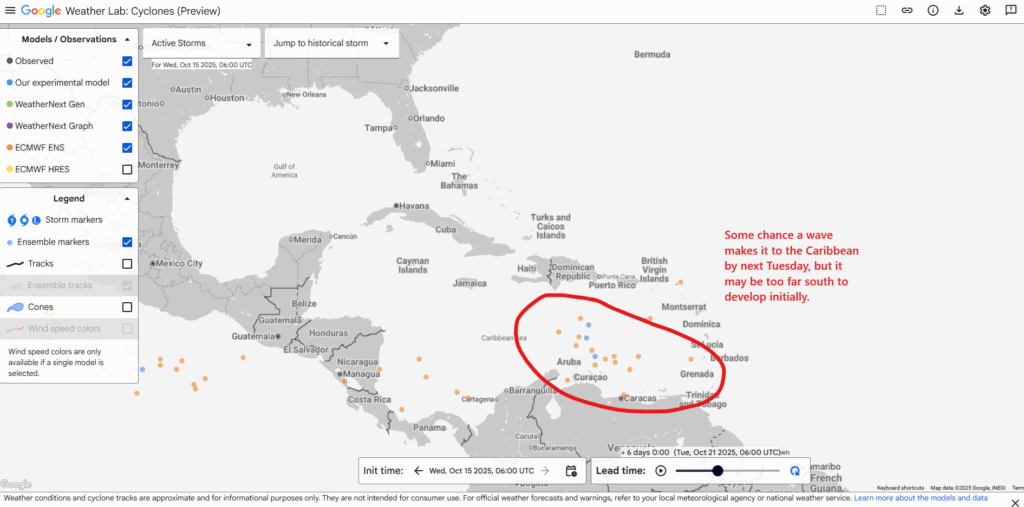
Once we get to later next week, there are some hints in the AI modeling that a disturbance could set up shop in the far southwest Caribbean, off the coast of Nicaragua or Honduras. As is typical for this time of year, movement would probably be slow and we’d be talking more about a rainfall risk than anything for portions of Central America (which as you’ll see below is not the best of news). But it’s a long way out and mostly speculative at this time. We’ll keep watching of course.
Newsy bits
I’m trying a section I want to call “Newsy bits.” I read a lot of news every day in order to keep up with what’s happening in weather and climate. Inevitably a pile of articles ends up taking up tab real estate, so in order to “keep it clean,” I’m gonna dump the tabs here.
Alaska storm recovery
First off, we noted the massive storm in western Alaska over the weekend. Well, if you want to help victims and survivors of the storm, I imagine it would be greatly appreciated. There is a post from Alaska Public Media explaining how you can help here. Very often, the best way to help is financially. The Alaska Community Foundation has setup a disaster relief fund for those areas impacted. You can access it here.
Defensible space in wildfire country
Unfortunately, the country has experienced numerous wildfire disasters in recent years. It has taught us a lot about resiliency and mitigation, however. One key element of mitigating wildfire impact and spread in communities is expanding defensible space around your home. Monterey is one of my favorite places on earth, and I found this interesting and encouraging. Defensible space inspections in the Monterey area have increased almost 300 percent year over year. The more that people do to help themselves help their communities, the better for everyone.
Colorado flooding
The Colorado Sun has the latest on the flooding in La Plata and Archuleta Counties in southwest Colorado. While the problems have been significant, the upshot is that some reservoirs are refilling after an exceptionally mediocre stretch of weather over the last year or so. Whatever the case, this was an exceptional, historic rain event for this slither of the country. The Land Desk also has a synopsis and more data on the flooding.
Mexico flooding
Major flooding has struck Mexico this month, which has thus far killed over 60 people across the country. This is a really messy story, not just because of the human toll and the disaster itself, but it seems to have been complicated by a bizarre situation with oil coating much of a flooded area in Poza Rica. There seems to be some anger about a lack of warning, and many people were only alerted to disaster by an oil company’s alarm system that they could hear. Not sure if there will be any fallout from this with their version of a national weather service.
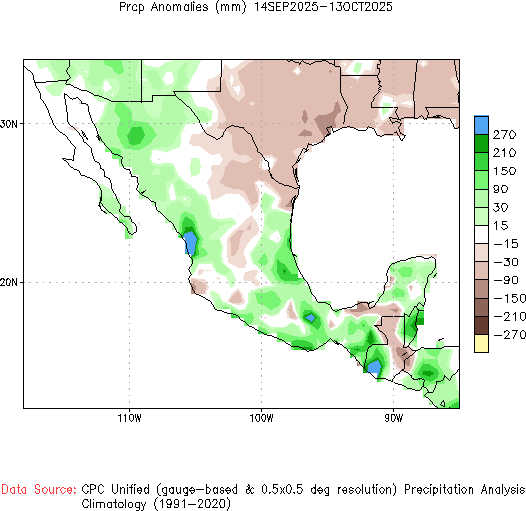
Mexico has been hit hard this summer with heavy rain on the order of 100 to 300 mm (4 to 12 inches) above normal in spots. Hardest hit has been the coast near the Gulf and the northwest part of the country.
